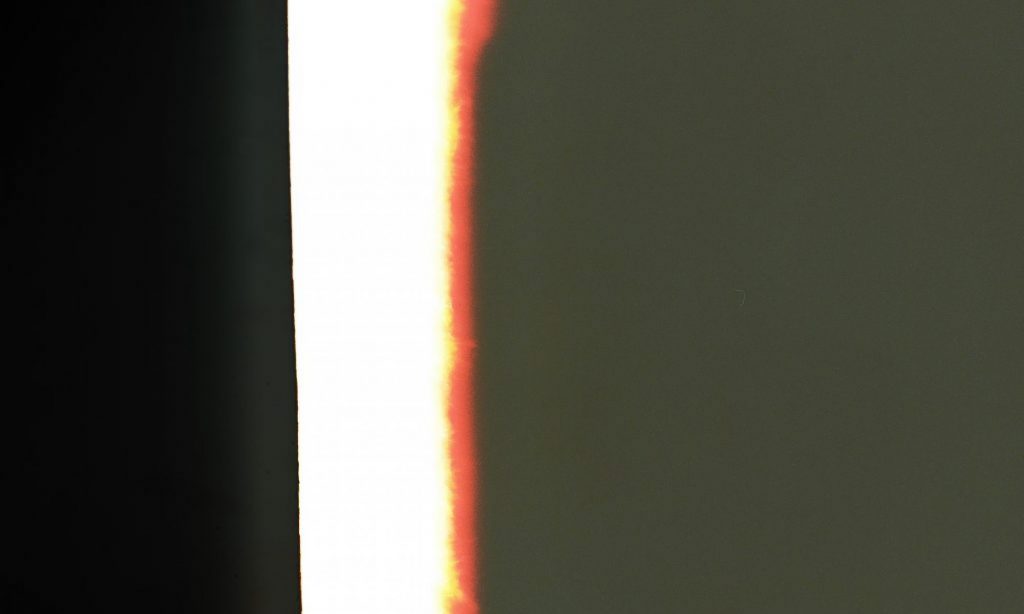I e-met Cassandra Quinn back in June when I first started looking into biodesign. She is now finishing her MA in Biodesign (CSM) and has been developing biodegradable materials made from a derivative of brown algae, proposed for applications in the fashion industry as thread, sequins and 3D printer filament. . She and PhD researcher and lecturer Oonagh O’Hagan hosted an online discussion “Fashion: an Alternative Future” about bringing biodesign and edible garments into the industry.
«Instead of ending up throwing our clothing away, we could end up either eating it ourselves or passing it off as animal feed. We grow our products, we farm meats to eat them – these are all strange concepts, so why couldn’t we make a material that could be processed into something else or that could be turned in compost? We ship our secondary fabrics to other countries and instead these compostable clothes could have a different life there. Our relationship with food and the industry behind it is already strange and this could turn it into something more positive». Half performance piece, half informational introduction to the developing field of bio-design, the conversation showed that these possibilities are not going to live in a vacuum as fashion has done for the last twenty years, but interact with all different industries like science and agriculture, focusing on how clothing can benefit them as well.
O’Hagan and Quinn have been working together to create awareness of the advantages of bio design and the possibilities of its collaboration with technology through modular pigment. They see bio design as a crucial component of the industry’s future. «I was frustrated about how static a lot of fashion textiles felt – that once the idea had happened, it was over, and we just moved on to something else. I got into the identity of materials and garment, how we could evolve that chain. I was quite interested in counterfeiting the idea of an original object and, and then as time went on, that became more prolific in my work».
It was particularly interesting the idea of an “ever-evolving object”. It would be a reaction to overproduction and other sustainable issues. It is in the line of Alice Pott’s use of sweat to manufacture materials and make a circular system of production.
Using live organisms such as algae to produce fabric creates biodegradable textiles, where clothing can not only break down at the end of its life cycle but can also end up as animal feed or be reused in other ways in the food industry, leading to a closed-loop cycle. Clothing could be made from natural organisms that would be beneficial for the planet as algae naturally traps CO2 and some can even be beneficial for the body, as algae such as spirulina have long been used in the health industry as a superfood and antioxidant.
While the area of science researching the positive effects of infused or supplemented clothing is relatively new, there is a need of moving away from one model of consuming fashion. These are new narrative tools objects and take into consideration both behavior and experience. We need to be accountable for what we do. Kinder capitalism, GET TO A PERIOD WHERE WE HAVE A ZERO IMPACT ON THE PLANET.
«We’re starting to see a surge of collaboration happening between scientists, researchers, designers, and the conversations open up,» says Quinn.«There are no longer these silos that are happening, where, if you’re a scientist, you stick to the research in this field of science and if you’re a designer, you only focus on garment cutting. We’re bringing together these different ideas».
Cassandra Quinn is looking into ways of stopping microplastics being released into the oceans by using an innovative idea of squid mechanisms to create non-toxic coatings for recycled fibres while improving their mechanical strength, helping them act as a barrier, inspired by the speculative design process brought forward by Oonagh O’Hagan. O’Hagan is focused on how the world is changing consumer mentality and still penalising those who cannot afford the way that sustainability is currently marketed, as an expensive way of indulging in ethical consumerism. «That’s happened with food, because we know about fast food and people are beginning to understand it’s not fair». She says. «People should be able to get pleasure, enjoyment and desire in a less destructive way. It’s not fair to expect people to always have this moral and ethical understanding, you have to go on the lowest common denominator where you’ve got people who are going to just buy the cheapest, lowest quality. Since this is the case, we’ve got to look at how we can make that have a lot less of an impact».
What Cassandra Quinn and Oonagh O’Hagan echoed was that we need to be ambitious with our dreams, be innovative as humans rather than destructive. Do we want to live in a MUNDANE future?























